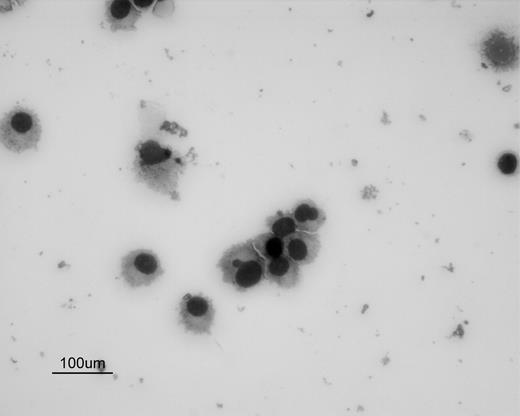Abstract
Using our new cytokine-free, mitogen-free in vitro culture system for primary multiple myeloma cells (see abstract by Cohen Y and Zipori D), we have observed peculiar nuclear changes occurring during the first days in culture. After 3–4 days small lymphocytic-like cells are frequently seen, accompanied by typical plasma cells together with plasma-like cells possessing a single bulge in one edge of the nucleus (Figure 1). This nuclear bulging has been seen only in cultures from primary myeloma cases therefore it might represent a pathognomonic disease related phenomenon. Later in culture, multiple cells show nuclear bulging of variable shapes and degrees. It seems that this heterogeneity represents a spectrum of the same nuclear process (Figure 2). In addition, binucleated cells with eccentric nuclei are commonly seen at this stage, whereas multinucleated cells can be seen occasionally. Another observation is an apparent burrier-like structure between those nuclei in binucleated cells. Most interestingly, despite extensive expansion of the cultured myeloma cells (whose clonality was confirmed by FACS analysis, PCR and FISH-Bioview), mitotic forms are very rare. Furthermore, by combined FISH/morphology analysis of some cultured binucleated myeloma cells from a patient with del 13, a single signal was seen in each of the two nuclei using a probe for chromosome 13. Altogether, these unusual myeloma cell forms can now explain the yet unexplained finding frequently seen by FACS analysis of nuclear hyperploidity in myeloma cells. Currently, we use time lapse cinematography to assess the possibility that cultured myeloma cells undergo nuclear replication, through budding, and examine the possibility that these changes lead to the emergence of two daughter cells.
Author notes
Corresponding author


This feature is available to Subscribers Only
Sign In or Create an Account Close Modal